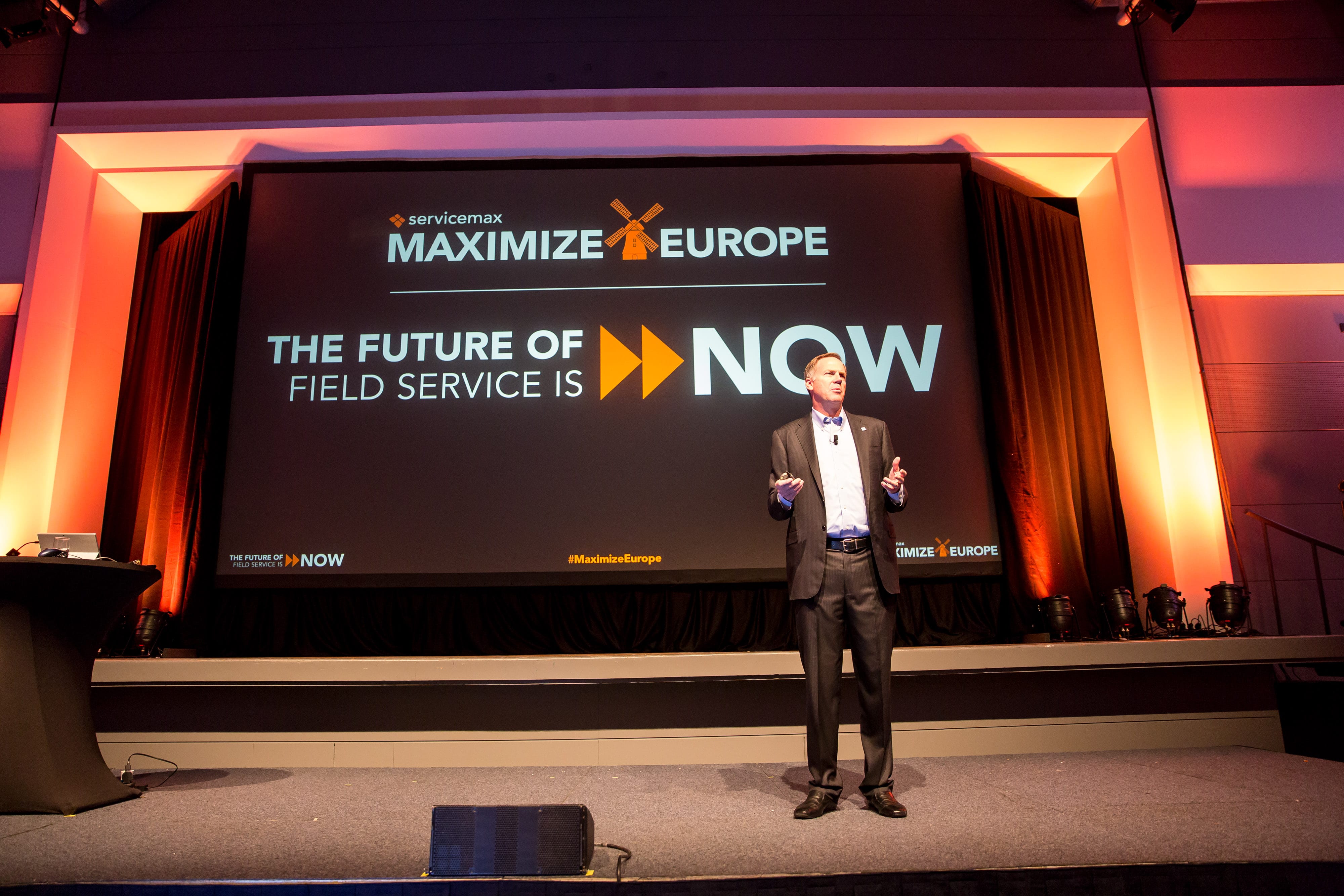No longer an afterthought, a cost center or a wallflower when it comes to investment, field service is now rivaling sales in terms of revenue generation.
“The growth engine for revenue,” is how ServiceMax CEO Dave Yarnold described it to the audience gathered in Amsterdam for Maximize Europe 2016, the company’s third user conference.
Research backs the bold claim. According to Bain & Company, service business is growing nearly twice fast as new product sales.
Tech-enabled field service provides the long-term customer relationships that foster long-term revenue — and it is recession-proof.
Ka-ching!
Cashing in On Service
As Yarnold said: “It’s not about finding more broken stuff to fix …. that’s not the game any more. It’s about innovation and new business models.”
That’s music to the C-suite’s ears — once they choose to listen. But these new business models take a lot of investment in people and time, which can take some powers of persuasion from field service professionals.
As Andreas Heckert, head of business improvement at Siemens Wind Power, explained to the audience: “This is not something where you have a shareholder meeting, get a blank check and off you go and do it. It takes stamina and it takes passion.”
But with Internet of Things (IoT) standard in wind turbines, Siemens is able to use the technology to help spot existing and potential problems and keep the turbines running optimally.
“It’s a long arduous path to service excellence,” acknowledged Rai Kasai, ServiceMax’s SVP of product. But hearing the experience of Siemens and others, including IBA and Elekta that are in the fight against cancer, and telecom leaders Sky Italia and QubeGB, it’s a path that many service leaders believe has been worth taking.
Drilling Down on Customers’ Needs
But transforming services requires putting customers first — and not merely in a ‘our-customer-is-important-to-us’ lip-service way. It’s important to ask what is the pain point for customers: What do they care about, and how can the service help customers’ bottom line as well?
For Elekta, which makes complex machines to treat cancer, patient care is the top priority for its healthcare customers. A machine may be scheduled to scan 30 to 40 patients a day, so any down time to that machine is a major disruption. By implementing IoT and getting into predictive support, this downtime can be dramatically reduced.
Innovation From Above
There’s no doubt that IoT has become a key tool in the field service toolkit. Some 40 percent of manufacturers already have sensors. But where should we look for the next tech revolution?
One answer is to look to the skies, said Athani Krishna, ServiceMax cofounder and chief strategy officer. Drones will provide field engineers with a birds-eye view of sites and machinery that are difficult to reach in person. Back at ground level, augmented reality will provide workers with more tools they need to get work done faster and with greater accuracy.
Whatever gains technology can bring, author and keynote speaker Matthew Syed reminded everyone that people are key. It’s vital at an individual and corporate level to encourage a growth mindset in which people learn from mistakes and practice and hard word (not just talent) are valued.




Share this: